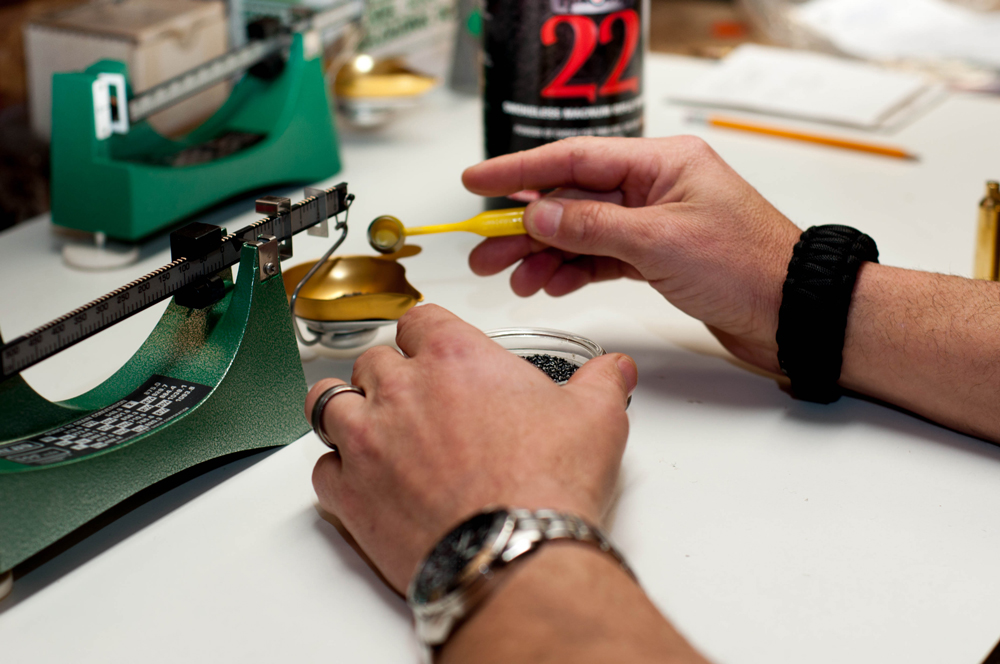At GunDigest, we independently review products. However, we may earn a commission when you purchase through links on our site. Learn More
Reloading Techniques that Save Headaches or Worse

When it comes to reloading techniques, there are some tricks and tips master ballistician Phil Massaro has picked up that make it safer and more efficient.
Everyone has their own style in this world, different strokes for different folks. However, some things that people attribute to style can be downright dangerous. Let’s talk about some simple and safe reloading techniques, which might save you wounded pride, or worse, body.
Priming
When it comes to priming your cartridges, I used to just dump a bunch of primers into the tray, and have at it. I’ve ended up trying to prime a case that is already primed (ruining the existing primer), and I’ve ended up with a case that has powder trickling out of the unprimed pocket.
Nowadays, I dispense the exact amount of primers I need for the cases I have in the case block. If I end up with more cases than I have primers for, I know to get on my hands and knees and check the floor for a primer that has dropped so it doesn’t end up in the vacuum cleaner or elsewhere.
Charging
I have friends, who are safe people in general, that will set 40 or 50 primed cases into a case block, and charge each case before seating the bullets into them. It makes for a good system, but it leaves open the opportunity for a double charge, or no charge at all.
I have done the ‘no-charge-at-all’ thing; it’s a mistake that almost everyone will make if they load enough cartridges. I’m not proud of it, and I’ve taken every precaution to see it never happens again. Thank goodness I’ve never had to deal with a double-charge, as the results of those can be deadly, or at least maiming.
I have modified the procedure a bit, to make things a bit safer. I still place the primed cases into the blocks, but I charge them with powder one at a time, and then immediately install the bullet and seat it. This alleviates a couple different problems.
There is no risk of a double charge, because I visually identify that there is no powder in the case before I charge it, and there is no risk of ‘no-charge-at-all’, because I can verify that there is powder in the case before seating the bullet. This works out well for any single stage press, whether for pistol or rifle.
Seating
If you load more than one bullet for any particular cartridge that you load for, the seating depth will more than likely change. The time spent readjusting a seating plug can become a pain, so I make a dummy round for each bullet that I load for, set to the exact seating depth required, and I keep it in the die box, labeled in permanent marker, with the bullet weight and name.
This way, when it comes time to switch bullets, you may back off the seating plug, raise the dummy round into the die, and screw the plug down until you feel it kiss the ogive of the bullet. That will get you very close, but one minor adjustment and a quick check with the micrometer and you’ll be in business much quicker.
Basic tips, I know, but sometimes it’s the little things in life that make things go smoothly.
Next Step: Get your FREE Printable Target Pack
Enhance your shooting precision with our 62 MOA Targets, perfect for rifles and handguns. Crafted in collaboration with Storm Tactical for accuracy and versatility.
Subscribe to the Gun Digest email newsletter and get your downloadable target pack sent straight to your inbox. Stay updated with the latest firearms info in the industry.